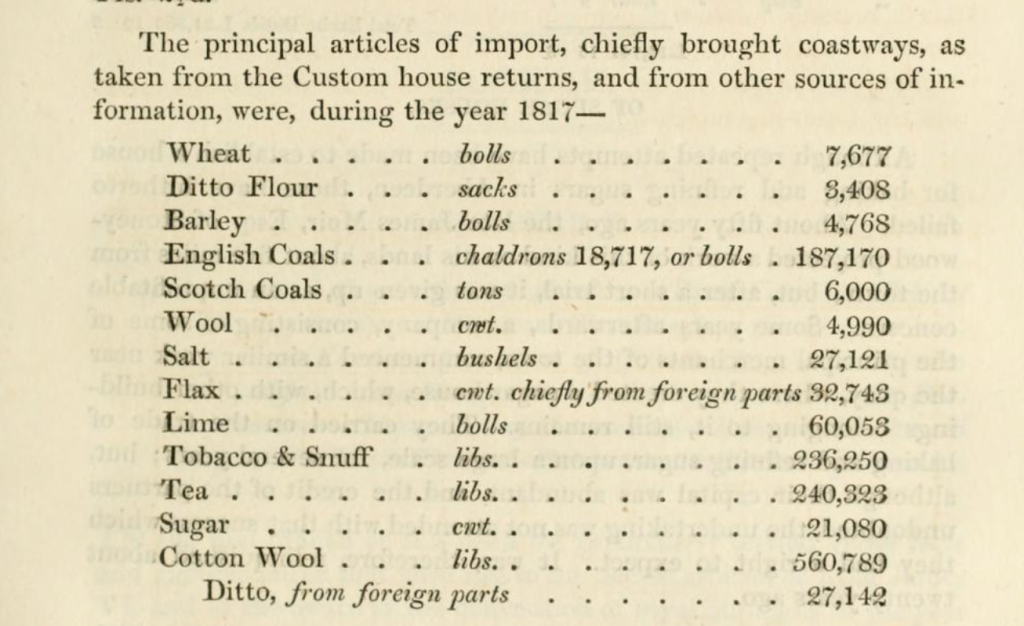As we noted in our last blog, about the salmon fishing industry in Aberdeen, there was plentiful, good food available locally in days gone by. Today, we are accustomed to being able to buy food from all over the world in our local shops. Some people think we should return to the days when food didn’t have air-miles and only eat what’s produced locally, in season. However, some foods and goods are simply not available locally, either today or back in the post-Napoleonic Wars era (after 1815). Early nineteenth century Aberdonians were just as keen to import food and other essential manufactures as their modern-day counterparts.
The Annals of Aberdeen* contains a fascinating table of imports to the city in 1817. It is shown below, with all the different weights and measures for each item.

Incidentally, the ‘lime’ in the list above was probably largely for construction and other industrial/agricultural purposes, not to add to your G&T. Also, our antecedents seem to have got through more tobacco and snuff than tea, which we doubt is the case today. What’s equally fascinating is where all this stuff comes from. “Foreign parts” obviously, but the Annals also tell us that “the other imports brought coastways from London, Hull, Newcastle, Leith, and Glasgow, consisted chiefly of the various articles used in the process of manufactures, besides the raw materials; oils and dye stuffs, apothecaries’ wares; china, glass and stoneware; cutlery, haberdashery, and millinery; jewellery, stationary (sic), and toys; leather, silk, cotton, woollen, and linen manufactures, fruit, wines, and British and foreign spirits; lead, ironmongery, and mahogany.” It’s probably much the same today, albeit in different quantities and from different sources (and also including lime for my G&T!).
Julie Skinner, Resourcing and Benefits Specialist, RGU
*an historical record of the city from late 13th to early 19th centuries, available online if you wish to explore it further.

